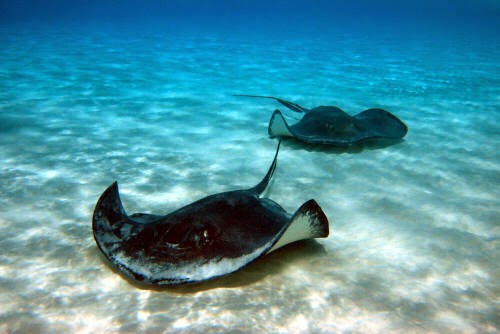Who doesn’t love a vacation at the beach? From building sand castles to watching the perfect view of the sunset or enjoying beach parties, no wonder it’s one of the most popular destinations all over the world. However, the ocean and everything around it is unpredictable and can be a dangerous place. Here are the 7 beach nuisances that you should know and be safe about. Once you have knowledge and a little know-how, you can stay at the beach with confidence.
If you get caught in a rip current, don't panic! Stay calm and do not fight the current. Escape the current by swimming across it--parallel to shore--until you are out of the current. Be cautious at all times and do not overestimate your swimming abilities.
Jellyfish Sting
Jellyfish stings are relatively common problems for people swimming seawaters. If stung by a jellyfish, call emergency services and seek immediate help. Get out of the water and avoid applying vinegar to the affected area.
Jellyfish stings are relatively common problems for people swimming seawaters. If stung by a jellyfish, call emergency services and seek immediate help. Get out of the water and avoid applying vinegar to the affected area.
Weather
Frightening news about tsunamis and typhoons can ruin your vacation. Be alert and always watch weather news. It is best to know the facts about uncommon occurrences or other coastal disasters for you to be prepared.
Frightening news about tsunamis and typhoons can ruin your vacation. Be alert and always watch weather news. It is best to know the facts about uncommon occurrences or other coastal disasters for you to be prepared.
Sunburn
According to Skin Cancer Research, sunburn doubles the risk of the development of melanoma later in life that makes the skin looking worst. Prevention is always the best so include sunblock with high SPF as part of your beach necessities and apply as often as needed.
Falling Coconuts
This is not a joke. Falling coconuts are a real threat. Just think of a nine-pound ball of coconut meat dropping 100 feet to the ground can cause serious injury to a beachgoer. Don't park your towel in close proximity to palm trees and don’t have sun bathing near these trees, especially on windy beaches.
Sting Rays
If any sea-dwelling animal brings chills to a swimmer’s spine, that’s the stingray. It's safe to swim alongside this sea creature—but the real danger lies at your feet. Do the stingray shuffle. When wandering in shallow waters, shift your feet back and forth in place. This helps to scare off nearby rays hiding in the sand.
Sand Flies
Sand Flies are insects that breed in wet soils in the tidal zones such as mangrove mud and sandy shores. Apply natural or organic insect repellants that has been scientifically proven to be more effective. Don’t forget cover ups especially while on beach.
Sand Flies are insects that breed in wet soils in the tidal zones such as mangrove mud and sandy shores. Apply natural or organic insect repellants that has been scientifically proven to be more effective. Don’t forget cover ups especially while on beach.
Following these precautions and tips above will keep the fun under the sun!





No comments:
Post a Comment